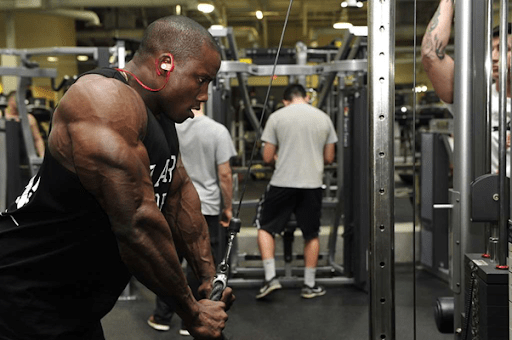

Many, including bodybuilders, pursue muscular strength, endurance, and physique. But achieving the desired outcome has become a challenge since countless training approaches exist. As a result, many fitness enthusiasts have been left pondering which path to pursue.
Resistance training is one of the best ways to train your muscles to become stronger and bigger. But as you begin resistance training, you realize there are two different approaches to achieving these goals.
On the one hand, you have strength training focusing on raw power and maximal force production. On the other hand, you have hypertrophy training, which aims to stimulate muscle growth and sculpt a visually impressive physique.
The two popular workouts are intertwined methods but are different. Each approach brings its unique benefits and targets different aspects of physical performance.
This article dives deep into strength versus hypertrophy to understand the fundamental differences between these training methods.
What is Hypertrophy?
Hypertrophy is increasing or enlarging muscle fiber’s size and volume resulting from targeted resistance training. It is popular among bodybuilders who focus more on increasing muscle size to achieve a visually impressive physique than strength and endurance.
Like any other fitness goal, acute variable training, such as selecting exercises and techniques, is crucial in achieving hypertrophy. Additionally, the number of repetitions, intensity, sets, and training frequency all create the ideal environment for hypertrophy. They determine the stress level you must put on muscles to achieve your fitness goal.
Hypertrophy training typically involves a high training volume of high repetitions per set, ranging from 6 to 12 repetitions at a low intensity of 75–85% of your 1RM, and multiple sets, three to five. This rep range is commonly associated with hypertrophy because it maximizes time under tension, promoting muscle damage and metabolic stress.
The training is performed using lighter weights with low intensity. Therefore, it may take longer to see the result than a person doing a strength training workout. You may also need to do a wide range of movements that target specific muscle groups from various angles than strength training.
The hypertrophy training routine should include compound exercises such as back squats, deadlifts, bench presses, and T-bar rows to recruit multiple muscle groups simultaneously. You may also need to incorporate isolation exercises, such as bicep curls or leg extensions, to target individual muscles.
Benefits of Hypertrophy
Below are four pros of hypertrophy:
Increased Muscle Mass
While hypertrophy and strength training increases muscle size, hypertrophy allows a tremendous increase in muscle size and growth. This is because hypertrophy enables you to train in higher volume (do more reps and sets) for an extended period. The higher the training volume, the more mass increase.
Enhanced Functional Fitness and Injury Prevention
Although hypertrophy training is often associated with bodybuilding and aesthetics, it also has functional fitness and injury prevention benefits. As the muscles increase, they provide better support and stability to the joints. Improved structural integrity helps to prevent injuries during physical activities and sports.
Additionally, hypertrophy involves lifting lighter weights which often has less risk of injury when training.
Promotes Muscular Symmetry
Performing workouts incorrectly can cause imbalances in muscle development. By targeting specific muscles, you can address muscle imbalances using hypertrophy workouts, which can help create a more proportionate and symmetrical physique, enhancing aesthetics and functional abilities.
Increase Energy Expenditure
One way to increase energy expenditure is by increasing your training volume (output). And since hypertrophy involves performing more reps, sets, and overall high training volume, it can be the best way to burn more calories while increasing muscle size.
Hypertrophy Cons
Below are four drawbacks of hypertrophy:
Reduced Strength and Power
While hypertrophy increases muscle size, it does not increase strength and power like strength training. Research shows that muscle mass increase due to sarcoplasmic hypertrophy does not always increase strength or force.
Overused Injury
Hypertrophy training can place substantial stress on your muscles, tendons, and joints as it involves high volume, intense workouts, and repetitive movements.
Also, the training has short resting time. Without sufficient muscle recovery time between sessions, the body may be unable to repair and adapt, increasing the risk of overuse injuries.
Focus on Aesthetics over Function
Compared to strength training, which emphasizes strength and endurance, hypertrophy training often strongly emphasizes aesthetics and muscle size, which may not align with everyone’s fitness goals or functional needs.
Risk of Overtraining
Due to higher training volume and lack of adequate time to recover between workouts, intense hypertrophy training can push the body to its limits, increasing the risk of overtraining.

What is Strength Training?
While hypertrophy is focused on increasing muscle size, strength training is a type of resistance training exercise focused on increasing the ability of your muscle to produce strength and endurance. The workout mainly focuses on improving muscle strength, power, and perseverance to enhance your ability to push, pull and lift weights, among other exercises.
To stimulate strength gains, the muscles must be subjected to a level of resistance that exceeds what they are accustomed to. The progressively heavier weights or increased resistance apply stress to your muscles, causing microscopic damage to the muscle fibers. This damage stimulates physiological responses that force the body to adapt to the increased demands, improving strength.
Unlike hypertrophy, strength training usually involves lifting heavy weights with lower training volume. This means you perform fewer sets of about 4-6 sets per workout but with higher intensity of 85–100% of your single-rep weight capacity. The higher intensity often improves with strength.
Strength training workouts usually target large and multiple muscle groups and joints in one action to enhance overall strength. These include muscles like the chest, back, shoulders, arms, and legs. Typical exercises include squats, deadlifts, bench presses, shoulder presses, rows, lunges, and various upper-body and lower-body exercises.
Benefits of Strength Training
While strength and hypertrophy training share common benefits, strength training has some distinct advantages compared to hypertrophy-focused training. They include:
Increased Strength
Strength training programs often involve lifting heavy weights at lower repetitions, aiming to develop the neuromuscular system, improving the force production rate, and firing synchronization necessary for lifting greater loads. This focus on maximal strength can be particularly beneficial for you or athletes such as Olympic power lifters involved in sports that require explosive power.
Enhanced Neuromuscular Coordination
Strength training improves neuromuscular coordination—efficient communication and synchronization between the nervous system and muscles. By performing complex movements and progressively increasing the load, strength training enhances the nervous system’s ability to recruit and activate the appropriate muscle fibers, improving coordination and motor skills.
Joint Stability and Injury Prevention
Strength training targets the muscles surrounding and supporting the joints. This increases stability and reduces the risk of injuries like sprains, strains, and instability.
Cons of Strength Training
Despite strength training having pros, it also has its cons. They include:
Increased Risk of Injury
Strength training involves lifting heavy weights and performing complex movements under high intensity. This can increase the risk of injury if proper form, technique, and safety precautions are not followed.
Neural Fatigue
Neural fatigue refers to a decrease in the ability of the nervous system to recruit and activate muscle fibers efficiently, resulting in a reduction in strength and performance.
Lifting heavy weights at high intensity, as in strength training, places significant stress on the nervous system, leading to neural fatigue, especially when training sessions are frequent without adequate recovery periods.
The Differences Between Hypertrophy and Strength Training
The table below shows the difference between hypertrophy and strength training.
| Hypertrophy | Strength Training |
|---|---|
| Training volume is higher, often 6 to 12 reps, but you can do more than that. | Training volume is low, usually 1-5 reps, but you can still do more. |
| Training involves the use of lighter weights. | Training involves lifting heavy weights |
| Training involves performing more reps with lower intensity. | You perform fewer reps with higher intensity. |
| Focused on increasing muscle size | Focused on increasing strength, power, and endurance |
| Suitable for bodybuilders and those focused on having a sculpted appearance(aesthetics) | Suitable for weight lifters such as Olympic weightlifters to improve performance in sports or workouts |
| Involves compound and isolation workouts | Involves compound workouts |
| Hypertrophy involves a short resting period of 60 to 90 seconds | Strength training involves longer resting periods due to higher intensity and heavy weights. |
Hypertrophy Vs. Strength Training Which is the Best?
Hypertrophy and strength training interconnect with each other. When you perform hypertrophy, the increased muscles can result in an improvement in strength. When you do strength training, the ability to perform workouts for long periods increases, possibly resulting in hypertrophy.
Although these workouts are interconnected, you can choose the one you want to focus on depending on your fitness goals.
Focus on hypertrophy if your fitness goal is bigger muscles and a well-defined muscular physique. The training will help you add skeletal muscle mass in targeted areas like your shoulders or chest. If you are an athlete participating in athletic performance, strength training may suit you. Create a strength training program targeting the areas you need to increase strength.
If you are new to lifting, the National Academy of Sports Medicine recommends building a solid foundation through compound strength training before trying hypertrophy. Besides, novices tend to develop muscle rapidly regardless of the type of lifts they do. Thus, you may begin reaping hypertrophy benefits from strength training compound exercises that use multiple muscles. Upon gaining more experience and a strong foundation, you can switch to hypertrophy training if muscle gain is your goal.
Also, you can mix hypertrophy and strength training exercises if you are advanced in weightlifting and want to improve strength and endurance alongside increased muscle mass. For instance, you can perform hypertrophy workouts with a constrained range of motion on certain days to activate and increase the size of specific muscle groups. On alternate days, you use strength training compound exercises like deadlifts, lunges, and press-ups to work for numerous muscle groups simultaneously. However, choosing one main goal is still important to know where to focus most of your time and energy.
Conclusion
Understanding the difference between hypertrophy and strength training approaches is essential to unlocking your full potential and achieving your fitness goals.
Strength training builds a foundation of power, resilience, and functional prowess. It empowers you to conquer physical challenges, excel in athletic pursuits, and develop a body capable of efficiently performing everyday activities.
On the other hand, hypertrophy training delves into the art of muscle growth and aesthetics. It sculpts and shapes your physique, creating visually impressive results that showcase your dedication and hard work.
Embrace the difference in these training approaches by diving into the world of strength and hypertrophy.






















You must be logged in to post a comment Login